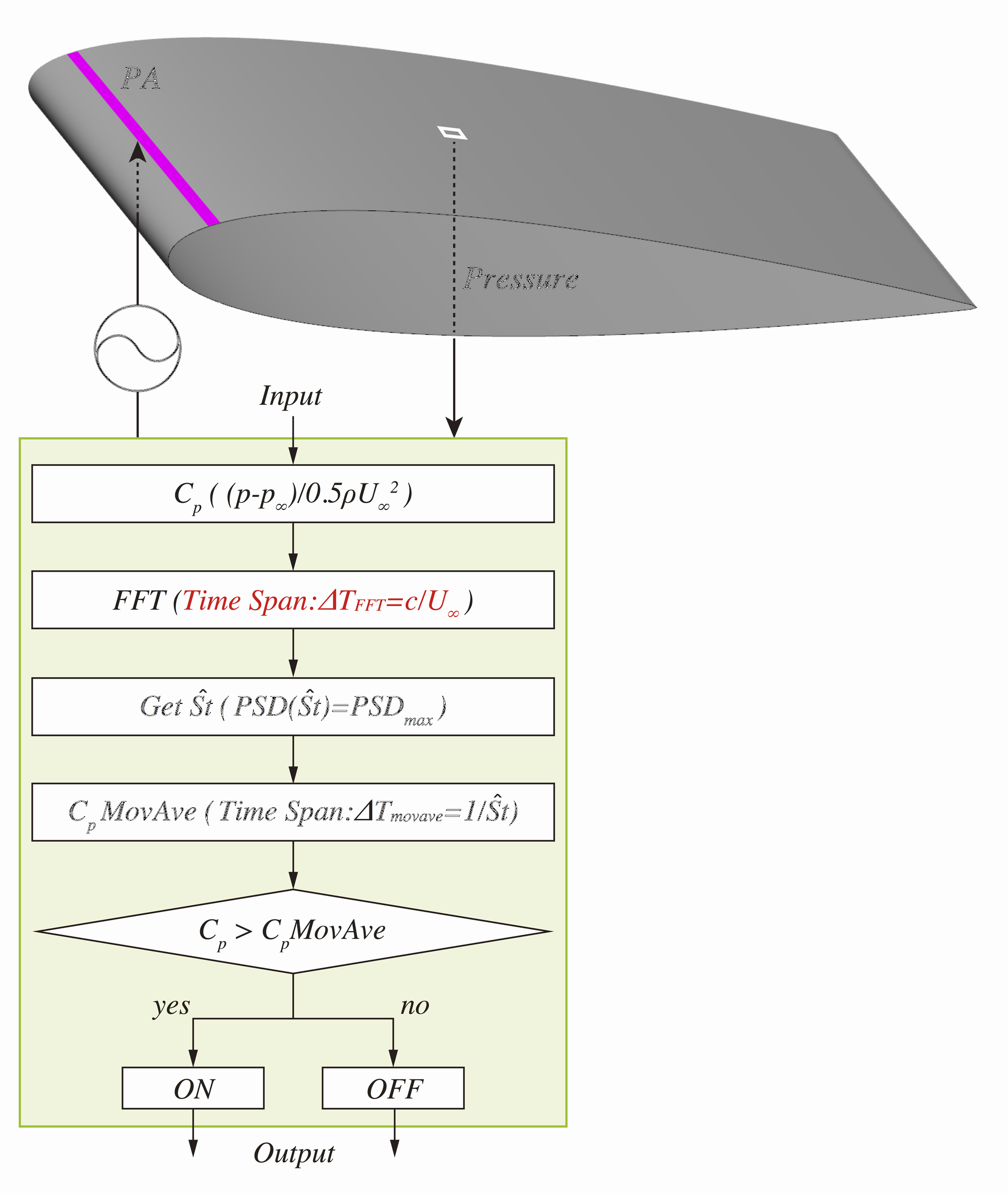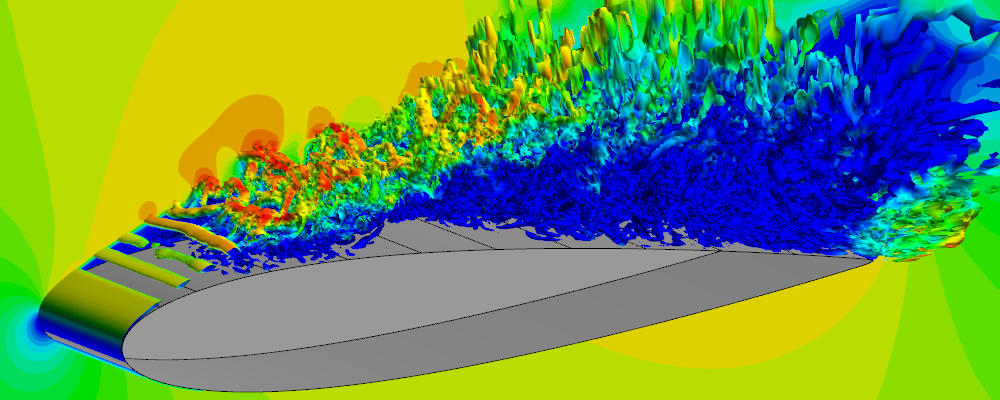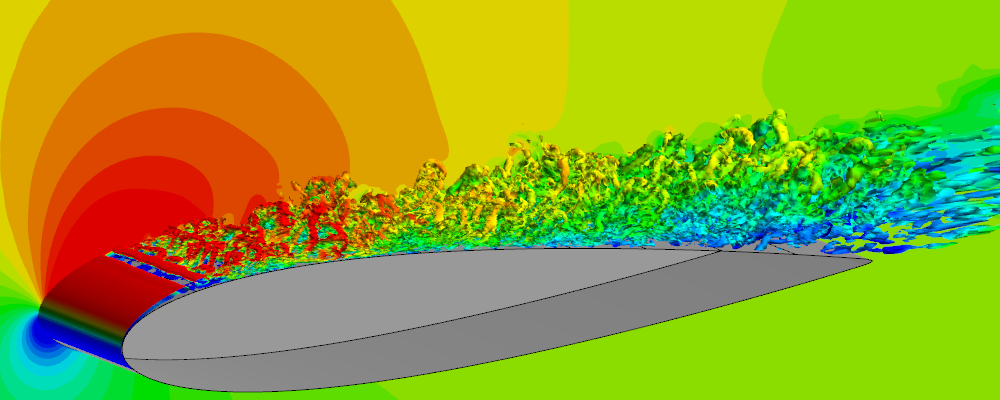Feedback Control of Flow Separation Using DBD Plasma Actuator
JAXA Supercomputer System Annual Report April 2017-March 2018
Report Number: R17EACA26
Subject Category: JSS2 Inter-University Research
- Responsible Representative: Kengo Asada, Tokyo University of Science, Department of Information and Computer Technology, Postdoctoral Researcher
- Contact Information: Kengo Asada asada@rs.tus.ac.jp
- Members: Kengo Asada, Takuto Ogawa
Abstract
The project develops flow control technic by using dielectric barrier discharge (DBD) plasma actuator to establish high efficient and robust vehicle systems such as rockets, aircrafts, and motor vehicles. We propose and demonstrate feedback control methods to adapt unsteady flows over the vehicles through a series of high-fidelity unsteady simulations.
Reference URL
N/A
Reasons for using JSS2
The large eddy simulations (LES) which are performed in the present project require a lot of computational resources, and the present LESs cannot be performed by general workstations.
Achievements of the Year
High-fidelity LESs of a NACA0015 airfoil flow controlled by a DBD plasma actuator are performed to verify effectiveness of a feedback control model which we propose and which has been already investigated by 2D simulations. The present feedback model (Fig. 1) drives the actuator located in the vicinity of the leading edge according to the passing of vortices above a pressure sensor (x/c = 40%) on the upper side of the airfoil. The passing of vortices is detected by abrupt pressure decrease compared to moving-averaged pressure value. In the present model, time range of moving average is unsteadily varied according to FFT analysis, which extracts the dominant cycle of the pressure coefficient, to improve robustness of control, where the time range was fixed regardless of flow condition in the model investigated in the last year.
Figure 2 shows the time variation of the pressure coefficient Cp (black line), the moving average of Cp (red line), and the state of actuation (blue line). The figure shows that the actuator is intermittently driven depending on the pressure variation. We apply the present feedback model to other flow conditions and confirm the effectiveness of this model on each flow condition. Figures 3 and 4 show the instantaneous flow field of vortex structures (visualized by iso-surface of Q-criterion colored by chordwise velocity) of controlled and non-controlled cases, respectively. The figure shows that large separation from the leading edge is suppressed in the controlled case, indicating that the present feedback control model is effective also in three-dimensional flow field.

Fig.2: Time variation of pressure coefficient Cp (black line), moving average of Cp (red line), and state of actuation (blue line).
Publications
■ Non peer-reviewed papers
1) Takuto Ogawa, Kengo Asada, Satoshi Sekimoto, Tomoaki Tatsukawa, Kozo Fujii, "Feed-back Control of Stall Separation with DBD Plasma Actuator by Detecting Vortex Passing over an Airfoil", AIAA SciTech 2018, 7-11 January 2018, Kissimmee, Florida, USA.
2) Takuto Ogawa, Satoshi Shimomura, Kengo Asada, Satoshi Sekimoto, Tomoaki Tatsukawa, Hiroyuki Nishida, and Kozo Fujii, "Study on the Sensing Parameters toward Better Feed-back Control of Stall Separation with DBD Plasma Actuator", AIAA Aviation Forum 2017, Denber, 5 - 9 June 2017.
3) Takuto Ogawa, Kengo Asada, Satoshi Sekimoto, Tomoaki Tatsukawa, and Kozo Fujii, "LES of Feedback Flow Separation Control by DBD Plasma Actuator over an NACA0015 Airfoil-Investigation of the Control Strategy with Pressure on the Airfoil Surface-," Katsushika, Tokyo, 30 August - 1 September 2017.
Usage of JSS2
Computational Information
- Process Parallelization Methods: MPI
- Thread Parallelization Methods: Automatic Parallelizatio
- Number of Processes: 76
- Elapsed Time per Case: 50.00 hours
Resources Used
Fraction of Usage in Total Resources*1(%): 0.32
Details
Please refer to System Configuration of JSS2 for the system configuration and major specifications of JSS2.
| System Name | Amount of Core Time(core x hours) | Fraction of Usage*2(%) |
|---|---|---|
| SORA-MA | 2,653,685.13 | 0.34 |
| SORA-PP | 0.00 | 0.00 |
| SORA-LM | 0.00 | 0.00 |
| SORA-TPP | 0.00 | 0.00 |
| File System Name | Storage Assigned(GiB) | Fraction of Usage*2(%) |
|---|---|---|
| /home | 057.22 | 0.04 |
| /data | 11,098.95 | 0.21 |
| /ltmp | 3,906.25 | 0.29 |
| Archiver Name | Storage Used(TiB) | Fraction of Usage*2(%) |
|---|---|---|
| J-SPACE | 0.00 | 0.00 |
*1: Fraction of Usage in Total Resources: Weighted average of three resource types (Computing, File System, and Archiver).
*2: Fraction of Usage:Percentage of usage relative to each resource used in one year.
JAXA Supercomputer System Annual Report April 2017-March 2018





